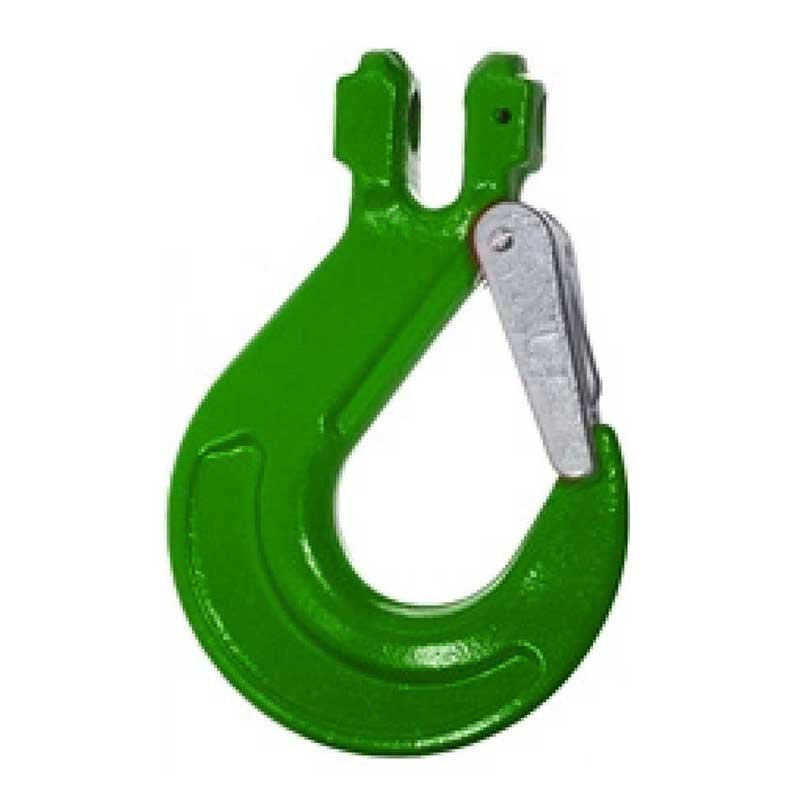This guide will cover: what rigging equipment is, how it works, and how riggers can implement proper safety protocols for its usage.
What is Rigging Equipment?
Optimize your heavy load handling with our specialized rigging equipment – a crucial set of tools designed to securely connect and distribute weights during movement. Industries spanning construction, manufacturing, transportation, and event staging rely on our top-notch rigging solutions for seamless operations and efficient load transfers.
What is the Difference Between Lifting and Rigging?
Achieve optimal efficiency in heavy construction operations by understanding the distinct yet complementary roles of lifting and rigging. This segment delves into their divergent functions and collaborative synergy on-site.
Distinguishing themselves along a continuum, rigging orchestrates the setup phase, ensuring secure load attachment using various tools, while lifting takes charge of the actual hoisting process. Rigging professionals meticulously prepare objects, securing them for transportation, paving the way for lifting operations to seamlessly move and position materials and personnel across the site.
Given the nuanced responsibilities, lifting and rigging demand specific equipment sets. Rigging essentials encompass wire ropes, jacks, bolts, and turnbuckles, interfacing with cranes and hoisting tools. Meanwhile, lifting equipment spans a range of machines like forklifts, boom lifts, and overhead cranes, each playing a crucial role in hoisting and lowering loads.
8 Types of Rigging Equipment

Types of Rigging Equipment Shabbir Enterprise Offers
Blocks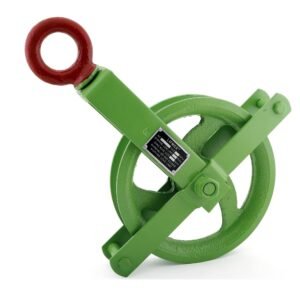
Gin Wheel Eye Type
GET IT NOW
Chains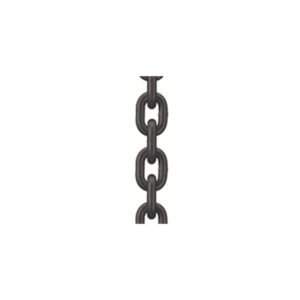
Grade 80 Load Chain
GET IT NOW
SHACKLES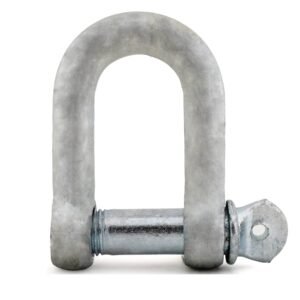
Commercial D Shackle
GET IT NOW
WIRE ROPES
Wire Rope Steel Core
GET IT NOW
ACCESSORIES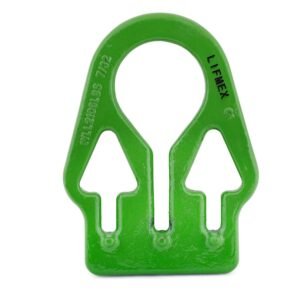
A Link – Adjustable Chain Sling
GET IT NOW
Mastering the essentials of rigging operations involves understanding diverse sets of tools, each serving distinct functions critical for ensuring a secure and safe lifting process.
Explore the key types of rigging equipment.
Rigging Hooks & Shackles
Facilitating the secure connection of chains, ropes, slings, and various rigging equipment during the moving process, a rigging hook or shackle is indispensable for preventing slips in heavy loads while suspended in the air.
Comprising two integral components – a loop-shaped steel connected to a chain and a safety pin for secure closure – rigging hooks, including choker hooks, eye hooks, clevis grabs, and sorting hooks, play a vital role in ensuring stability.
The optimal selection of a rigging hook involves careful consideration of the following criteria:
1. Load weight
2. Nature of the object being moved
3. Size of the hook opening (ranging from 5/8 inches to 1 17/32 inches)
4. Angle of the hoist
5. Connection points from the top and bottom of the hook.
Wire Ropes
Supporting the load’s shape throughout the lifting process, this apparatus is commonly affixed to cranes using hooks, shackles, or swivels for efficient load attachment and movement.
Its strength and application are contingent upon several factors:
1. Rope diameter, with 6 x 19 and 6 x 37 standing out as popular variants.
2. Core material
3. Steel grade
4. Wire finish, including bright steel, galvanized, and stainless steel.
In accordance with OSHA 1926.251(c)(4) guidelines, each rope must be a seamless, continuous piece without any knots, ruling out endless rope slings and eye splices at the wire ends. Additionally, any eye splice in a rope should consist of only three full tucks.
Slings
A sling, a nimble and lightweight tool, partners seamlessly with wire ropes to effortlessly elevate substantial loads, offering both robust strength and equilibrium in maneuvering weighty materials across the site. Crafted predominantly from synthetic materials, slings manifest in two primary types:
1. Endless Sling: Forms an infinite loop configuration.
2. Eye-and-Eye Sling: Features flat, triangular, or twisted ends crafted from metal, polyester, or nylon.
Pulleys & Blocks
Pulleys and blocks collaborate seamlessly to facilitate the lifting of heavy objects with minimal force, offering essential support and diminishing the pressure needed for load elevation.
The pulley operates by encircling a rigging rope, connecting it to the object, and managing the rope as it lifts the load. Its sizes vary, contingent on the frame type, rope specifications, and sheave size employed.
Concurrently, the block acts as a stabilizing force, bearing the weight of the rope throughout the lifting process. Common block types encompass snatch blocks, square blocks, and swivel blocks.
Eye Bolts
Serving as a pivotal anchor point, this tool adeptly forms loops with cables in various rigging applications. Available in diverse sizes and materials, riggers can select the most suitable option based on their specific requirements. The following are common types of eye bolts:
1. Shouldered Bolts: Utilized for loading equipment at an angle.
2. Non-shouldered/Straight Bolts: Employed for vertically lifting objects.
3. Other Varieties: Including U-bolts, screw eye bolts, and more.
Selecting the appropriate eye bolt involves careful consideration of the following criteria:
1. Weight of the Load
2. Type of Sling Used
3. Angle of Loading the Object (e.g., angular, vertical)
4. Frame Material for the Bolt (e.g., wood, metal)
Steel Nuts
Steel nuts play a crucial role in anchoring a rigging system alongside eye bolts, offering versatility with various sizes and configurations tailored for different rigging applications. The selection process hinges on the total weight of the load and the type of thread employed, whether right-hand or left-hand.
Notable examples of steel nuts encompass:
1. Ball Ends
2. Dome Nuts
3. Hex Nuts
4. Lifting Eye Nuts
5. Wingnuts
Turnbuckles
This device effectively modifies the length or tension of cables, chains, ropes, and other tensioned rigging equipment. It features two threaded eye bolts, with one securely fastened to each end of a compact metal frame. Additionally, it is available in two variations: a stretching screw and a bottle screw.
Spreader Bars & Lifting Beams
These instruments establish a secure link between the object and the crane during lifting operations, providing essential stability for a controlled and manageable lift. The choice of these tools is contingent upon the specific characteristics of the load requiring support.
For handling substantial weights, spreader bars are the optimal choice. True to their name, these tools distribute the load over a wider area, facilitating easier and more efficient transportation. On the other hand, lifting beams are better suited for lighter loads, adept at bearing the entire weight from a singular point.
Safety Considerations for Rigging Operations
Prioritizing safety is paramount in every rigging operation, as crane and rigging accidents pose serious risks to both workers and property. According to the U.S. Bureau of Labor Statistics, over half of fatal crane injuries between 2011 and 2017 resulted from falling objects or equipment.
To mitigate these risks, strict adherence to health and safety regulations governing equipment handling is imperative. The Occupational Safety and Health Administration (OSHA) has outlined comprehensive guidelines, encapsulated in both OSHA 1926.753 (Hoisting and rigging) and OSHA 1926.251 (Rigging equipment for material handling).
Safeguard personnel and property by diligently following these guidelines throughout the entire rigging operation, from pre-operation preparations to the operation itself and post-operation assessments.
Before the Operation
- Conduct a thorough inspection of the equipment, ensuring it aligns with the appropriate size, style, diameter, length, and thickness.
- Verify the overall condition of the equipment to ensure it is in optimal working order.
- Promptly eliminate any defective equipment from the premises to maintain a safe working environment.
- Familiarize yourself with the manufacturer’s specifications regarding safe working load and established limits.
- Provide comprehensive training to employees, ensuring they are well-versed in and adhere to proper rigging procedures.
During the Operation
- Adhere strictly to the specified load limit of the equipment during operation.
- Refer to rigging charts meticulously for accurate guidance.
- Ensure personnel are kept at a safe distance from the lift area.
- Before proceeding, hoist a few inches and verify the secure positioning of the rigging.
- Initiate and conclude lifts gradually to maintain control and stability.
- Avoid leaving a load suspended on the rig to prevent potential hazards.
- Maintain a safe distance of 10 feet from power lines at all times.
- Remain vigilant for potential obstructions in the working environment.
- Utilize appropriate hand signals when communicating with crane operators.
After the Operation
When not in use, relocate the rigging equipment away from the premises.
Securely store it in a designated, safe compartment to prolong its lifespan.
Tips for Maintaining and Operating Rigging Equipment
Even the most robust tools can succumb to wear and tear without proper care, particularly when exposed to harsh environments and heavy-duty operations.
When working with rigging equipment, here are essential considerations:
1. Pre-use Inspection: Ensure the equipment is in optimal condition before usage by checking for cracks, bends, corrosion, and other signs of strain.
2. Adherence to Specifications: Follow the manufacturer’s specifications meticulously, including load weight, angle, center of gravity, and other relevant parameters.
3. Safe Operating Temperatures: Operate tools within their safe working temperatures; for instance, synthetic web slings can be damaged if exposed to temperatures exceeding 180°F (82.2°C).
4. Post-operation Storage: Safeguard the quality and longevity of rigging tools by storing them in a secure space after operations.
Store the equipment in a location devoid of heat, dirt, and moisture to prevent damage to their surfaces.
Prevent these tools from getting wet, as moisture can expedite the corrosion process. In damp environments, promptly wipe the equipment after use.
Exercise caution to avoid dropping the tools post-use, as harsh particles can induce friction and contribute to surface wear.
Shield the tools from direct sunlight and UV rays to prevent them from becoming dull or faded over time.
Perform Regular Rigging Inspections with Shabbir Enterprise
Ensuring the safety and optimal condition of rigging equipment is paramount before commencing operations to safeguard both equipment integrity and personnel well-being. However, overlooking certain aspects becomes a risk without a readily available checklist.
Fortunately, Shabbir Enterprise serves as a robust tool for conducting routine maintenance checks, offering the following functionalities:
1. Assign a Rigger: Designate a rigger to conduct maintenance checks efficiently.
2. Record Equipment Conditions: Document the state of cables, slings, chains, and other rigging equipment systematically.
3. Real-time Malfunction Reporting: Swiftly report any rigging equipment malfunctions in real-time for immediate attention.
4. Prompt Issue Resolution: Take timely actions to address equipment issues promptly.
5. Mobile Reporting: Generate and transmit comprehensive reports conveniently on your handheld device, ensuring accessibility and efficiency in the inspection process.
- Maintain a comprehensive inventory record of all rigging hardware.
- Provide employees with thorough training on proper rigging safety practices.
- Effectively oversee and organize essential assets required for work.
- Simplify the process of scheduling regular maintenance and inspections.
Related Articles to Explore
Slings enable you to hoist, move, and position heavy loads safely and efficiently.
Shackles are used to lift, secure and rig heavy loads.
For further insights or to discuss your unique requirements, we invite you to connect with us Explore the unparalleled expertise and quality solutions that Shabbir Enterprises brings to the table, ensuring your lifting needs are met with precision and reliability.
